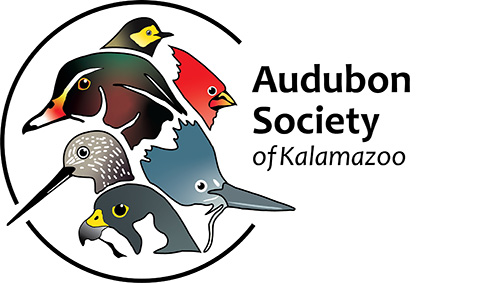Talons Over Mackinac
Mackinac Straits Raptor Watch Newsletter
August 2020
In the spring of 2020, although people weren’t moving around very much, raptors certainly were, flying to reach their summer nesting areas. The Mackinac Straits Raptor Watch recorded more raptors flying through Mackinaw City than in any previous year. In addition, three species had their highest daily counts ever.
Now in its seventh year of formal counting using paid professional contractors, MSRW continues to build a valuable data collection – and to set and then break its own records.
In particular,65 Bald Eagles were tallied on May 26, versus the previous high single-day count of 58.20,763 Broad-winged Hawks were tallied on May 1, compared to the previous high of 17,022.733 Turkey Vultures were tallied on April 3, beating the previous high of 593. The overall 2020 total of 73,365 raptors exceeds the previous high count, just last year in 2019, of 65,561 over slightly fewer hours of observation (469 hrs. in 2020 versus 473 hrs. in 2019).
In addition, MSRW and Mackinaw City still hold the nationwide record for Red-tailed Hawks (22,420 set in 2019), and the most Golden Eagles seen east of the Mississippi (374 in 2015).
The value in our data collection is extended through our membership in an international network of hawk count sites. Through collaboration with the Hawk Migration Association of North America, we gain expert help analyzing our data, and a nationwide context for understanding its significance. A new analysis, posted below, showcases these seven-year trends.
Percentage Change in Spring 2020 Raptor Count Data Compared to Previous Six Years’ Spring AverageA strong increasing trend can be seen for Broad-winged Hawks and Red-shouldered Hawks. Also increasing in numbers, to a lesser extent, are Bald Eagles, Turkey Vultures, Red-tailed Hawks, and Peregrine Falcons. On the flip side, some species have decreased over the past seven years, including Ospreys, American Kestrels, and Sharp-shinned Hawks.
The general public has been thrilled at the recovery of the iconic Bald Eagle in Michigan and the Great Lakes. In the 1950s and 1960s, they nearly vanished due to the use of DDT. Ornithologists are now noticing a decline in Ospreys. Part of the reason is that these fish-eating birds must compete with increasing numbers of Bald Eagles for nest sites near good fishing lakes.
The decline of American Kestrels observed at the Mackinac Straits is consistent with their decline nationwide, and appears to result from a mix of factors. These smallest of North American falcons eat mostly insects and nest in cavities.
While trends at Mackinaw City are measurable, we still are learning what our data mean in the larger context of raptor populations and their movements. It is not clear yet how well fluctuations in our counts reflect changes in population size or if they result from other factors such as wind and weather patterns, which are known to affect migration patterns. The data analysis is complex and must simultaneously examine the data from other hawk watches across the Great Lakes and Midwest region.
What MSRW has illustrated beyond a doubt is that the Straits of Mackinac form a vital corridor for these birds. That’s why we have committed to long-term annual monitoring here. That’s why we appreciate the hundreds of people who give to support this research and the related public outreach.
The Mackinac Straits Raptor Watch is a non-profit organization that conducts scientific studies of hawks and owls migrating through this region of northern Michigan, educates the public about them, and aids in conserving them. The group appreciates support from more than 350 individual and business contributors, and from organizations, including the Mackinac Area Visitors Bureau and Petoskey Harbor Springs Area Community Foundation. To learn more, volunteer, or donate, visit www.mackinacraptorwatch.org.
Our email list is generated from our events and field trips, where you have signed up to receive email from us.
Our mailing address is:
Mackinac Straits Raptor WatchP.O. Box 465 Petoskey, MI 49770
Add us to your address book
Want to change how you receive these emails?
You can update your preferences or unsubscribe from this list.



